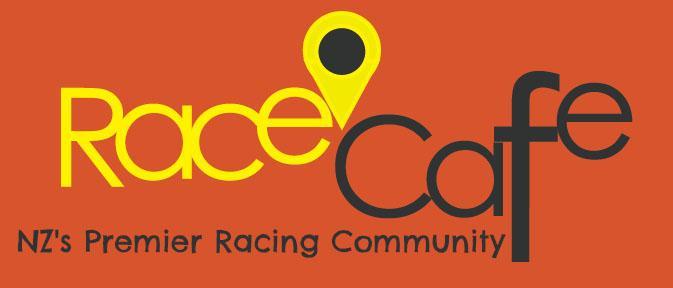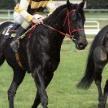-
Latest Posts
-
By chiknsmack · Posted
On paper I love the Dark Angel over Oasis Dream, but he's not the sprinter I'd expect from the cross. So I'm still hanging out for a sprinter-miler son of Dark Angel or Mehmas to end up at Little Avondale for all those Per Incanto mares. It'll be interesting to see if on type he's a better match for mares by Per Incanto or, say, Reliable Man. Having watched a few of his videos his knee action is maybe a bit of a worry too. From those videos a stallion I look the like of is Luxembourg. He was one of Auguste Rodin's pacemakers in the Irish Champion where he ran a solid gallop all the way and still beat home Alflaila (5th) when 2nd beaten only half a length by the horse he set up the race for. He has international form in a Hong Kong Cup where he ran 2nd to Romantic Warrior; in that race he followed Romantic Warrior, made a move around the turn to flush RW out three-wide (leaving himself four-wide), looked gone early in the straight but fought back to be beaten a short head. He's a Group 1 winner at 2, 3, 4, and 5 from 1600m to 2400m, and was 3rd in the English 2000 Guineas of his year. Coolmore have sent him straight to their National Hunt roster so maybe they know something I don't, but on the other hand if a NZ stud wanted to shuttle him I don't know if they'd find much resistance. -
Quite predicable already . Don Hugo leads , Duchess Megxit trials , Chase a Dream 3 back . LTF sits parked . Duchess Megxit could be value as would be Chase a Dream if he gets a crack at them . But the Aussies might be one , two here
-
By chiknsmack · Posted
Part 1: Thursday Sire-line stories: Part One Studying equine pedigrees can quickly become complex. In just a five-generation pedigree there are up to 32 ancestors in the fifth generation; and in the tenth generation there are 1,024 positions. The pedigree of a typical thoroughbred of today can be traced back for around 25 generations, yielding 33,554,432 names (many, of course, repeated) in the 25th generation. I counted them all, just to be sure. However, one particular element can be followed quite easily, that of sire-to-sire heredity, the so-called ‘sire-line’. Here, there is just one name to remember from each generation. So, a son of Frankel traces through Frankel, Galileo, Sadler’s Wells, Northern Dancer and then via other famous sires such as Nearco, Phalaris, Cyllene, Bend Or, Stockwell, Whalebone, Waxy, Pot8os and Eclipse (in the 21st generation), with the line’s founder, the Darley Arabian, back in the 25th generation. For around 200 years every thoroughbred in the world has traced back in male-line to one of just three stallions originally from Eastern sources: the Byerley Turk (born c.1682), the Darley Arabian himself (1700) and the Godolphin Arabian (1724). In recent years the Darley Arabian sire-line has been dominant, with at least 98 per cent of major winners worldwide belonging to it. A small number have come from the Godolphin Arabian line, but hardly any from that of the Byerley Turk. This situation sometimes causes significant angst, particularly regarding the imminent demise of the oldest of the three lines. Particular concern was expressed by one lady, who not only published a book about the Byerley Turk but purchased six mares to cross with remaining males of his line in an attempt to restore it. Her fears about the loss of the Byerley Turk sire-line were that: “We’re going to compromise the integrity of the breed. The thing people forget is that we’re not only losing the male line, but (if we lose the other sire-line also - Ed) we’re also losing all the genetics from the mares that comprise Matchem and Herod.” Unfortunately, this statement, along with concerns expressed by other authors about ‘loss of the diversity of the breed’ should the Byerley Turk/Herod line fail, are somewhat ill-informed (a much more polite term than ‘nonsensical’). Detailed studies I have made of the influence (defined as ‘genetic contribution’) of various ancestors to successful thoroughbreds of the modern era indicate that the most important distant forebear of today’s thoroughbreds was, by some way, Herod, followed by the Godolphin Arabian, Eclipse and Herod’s son, Highflyer. The disappearance of the sire-to-sire line for any one of these would merely remove one particular route by which his influence might be inherited. Twenty-one generations back, he might still be found in all but one of a possible 1,048,576 places for males in the pedigree. Losing only one such possibility would not mean ‘losing all the genetics’ from him, since he could have passed on his genetic influence via multiple routes from all the other positions in the pedigree where he might still be found. The only material effect it would have is that no future male produce would inherit the Y chromosome possessed by the Byerley Turk (pictured below). However, since this chromosome is the smallest in the equine genome, and its main purpose is to tell the horse that he might become a daddy, this is unlikely to represent much ‘loss of genetic diversity’. So, if the sire-line is immaterial in producing a racehorse’s most important quality, high-class racing ability, why do I intend to talk about the topic some more? Well, the simple reason is that I have long found the struggle for supremacy between various sire-lines a source of fascination - like those between medieval kings taught in school history lessons long before those on Diversity, Equity and Inclusion began. Ongoing battles between great sires for long-term male-line success are irrelevant to consideration of which horses to use for breeding; but they do provide intriguing insights into the history of the breed. I shall now try to show why . . . The Byerley Turk/Herod line Herod’s son Highflyer (born in 1774) was a great racehorse and sire, undefeated in 12 starts and champion sire 13 times, a record until Sadler's Wells achieved 14 titles in 2004. He sired three Derby winners, of which one, Sir Peter Teazle, also proved to be a great sire, being champion ten times and producing four Derby winners, along with another champion sire, Walton. The Highflyer line continued, with a final champion sire, Venison, coming as late as 1848. However, the quality of the best male-line products was declining. By the 100th anniversary of Highflyer’s birth, the sire-to-sire line to him had virtually disappeared. Another Herod sire-line continued in the US via a grandson, the first Derby winner Diomed, exported at the age of 21. This led to Lexington, who became champion US sire 16 times. Several of Lexington’s sons too were outstanding stallions; but the increasing success of European imports ultimately caused his line to fail. Therefore, the only Herod (pictured below) male-line that (just about) continues today was passed down from his son Woodpecker to The Flying Dutchman, a great racehorse of the 1850s. However, by the second decade of the 20th century this line too was fading, so a resourceful Irish breeder decided to purchase a Herod-line horse, Roi Herode, from France, in an attempt to revive it. Roi Herode was generally regarded as a one-paced stayer; and he was only mated to the mare Vahren after he broke down in training at a time when few other mares were available. The mating produced The Tetrarch, a brilliant, unbeaten two-year-old and one of the fastest horses ever to race in Britain. The Tetrarch also proved to be an outstanding sire; but here the luck ran out, for he was low in both libido and fertility. He failed to establish a lasting male-line despite producing an almost equally brilliant son in Tetratema, along with three St Leger winners. A daughter, Mumtaz Mahal, generated his major influence on the breed. A more lasting solution to the line’s problems seemed likely soon after, in the form of Ksar, a brilliant racehorse who won the ‘Arcs’ of 1921 and 1922. In turn, his son Tourbillon and grandson Djebel, bred by the great French breeder Marcel Boussac, became leading stallions in Boussac’s stud at a time when it dominated European racing. Surely, at last, the Herod line was secure? It was not to be. Boussac’s breeding fortunes began to decline in the 1950s; and, with no obvious successors to Djebel in his stud, he imported several American stallions who failed abysmally. However, in other hands, Djebel’s son My Babu sustained the line for a time, with his son Better Boy and grandson Century becoming champion sires in Australia; while another grandson, Partholon, was three-times leading sire in Japan. However, none of these produced long-lasting lines. Accordingly, the Herod line ultimately came to depend on the sprinter Ahonoora (tracing to Djebel), who proved a surprisingly successful sire. However, males by Ahonoora’s Derby winner, Dr Devious, and his best stallion son, Indian Ridge, had limited impact at stud. Ironically, some of the best runners from the line, including multiple Group 1 winners Cirrus Des Aigles and Collier Hill, along with the top-class sprinters Borderlescott and Deacon Blues, raced as geldings. These factors have brought about the near-certain demise of the Byerley Turk/Herod line. Today, its most viable representatives appear to be Pearl Secret (now sold to a Byerley Turkophile in Japan) and Diamond Boy (a National Hunt sire in Ireland). The Godolphin Arabian/Matchem line The Godolphin Arabian (pictured below) provides a paradox. My analyses indicate that he is the most important of the original foundation sires of the breed, with his genetic influence on today’s thoroughbreds around those of the Darley Arabian and Byerley Turk combined. However, his sire-line, coming through Matchem, has never reached the peaks achieved by the lines of the other two, via Eclipse and Herod respectively. The Matchem line’s most famous product in the 19th century was the first winner of the Triple Crown, West Australian (born in 1850); and through him the line was revived in the early 20th century by the near-simultaneous appearance, from branches that had diverged several generations previously, of a pair of massive and almost unbeatable chestnut colts, Hurry On (1913) and Man O’ War (1917). Both became outstanding stallions, although Man O’ War was hampered in this regard by his owner’s discouragement of other prominent breeders from using him, instead choosing to send him generally inferior mares of his own. Nonetheless, Man O’ War did produce US Triple Crown winner War Admiral; but he prolonged his sire’s genetic influence largely through his daughters. The branch of the Matchem male-line that survives today comes from Man O’ War’s less talented son War Relic, via his top-class great-grandson In Reality. Three generations later an even better horse was sired by a mere stakes-placed stallion. This was Tiznow, who gained two memorable Breeders Cup Classic wins but whose best sons were only useful sires. In Reality’s line also runs to the champion sprinter Dream Ahead, a good stallion who is still at stud in the UK but yet to sire a son likely to succeed him. So how much longer the Matchem sire-line will survive is uncertain. This is because Hurry On’s three Derby winners, Captain Cuttle, Coronach and Call Boy, proved to be indifferent sires; while the line’s descent from the good stayer Precipitation to Supreme Court, Santa Claus and Sassafras, eventually died out too. The Eclipse line via King Fergus (or not!) The best sire of the 19th century, St Simon, is recorded as belonging to the Eclipse sire-line through the only link not through Pot8os but via another son, King Fergus. However, a few years ago genetic testing of male-line descendants of St Simon indicated that they shared a Y chromosome inherited from Herod rather than Eclipse! St Simon’s sire was another outstanding racehorse and stallion, Galopin, and rumour at the time of Galopin’s racing career suggested that he was not, as registered, by Vedette (winner of the 2000 Guineas and St Leger), but by Delight (merely a good handicap winner), formerly at the same stud as Vedette but moved elsewhere early in the year that Galopin was conceived. Delight was sired by a son of The Flying Dutchman, perhaps making Galopin a male-line descendant of Herod. St Simon was not only a great sire (champion sire nine times) but a great sire of sires. However, his grandsons were far less successful at stud and his male-line went into rapid decline. It then re-emerged spectacularly in the middle of the last century through the Belgian-bred Prince Rose (via sons Princequillo, Prince Bio and Prince Chevalier and grandsons Charlottesville, Round Table and Sicambre) and the unbeaten great, Ribot (via sons Arts And Letters, Graustark, His Majesty, Ragusa and Tom Rolfe and grandsons Hoist The Flag, Key To The Mint and Pleasant Colony). However, both the Prince Rose and Ribot branches faltered after those halcyon days. The Prince Rose line disappeared first, when none of his grandsons were able to produce lines that long survived them. Ribot’s male-line is almost certainly extinct too, following the stud failures of the last high-class sons of Pleasant Colony, the Breeders’ Cup Classic winner Pleasantly Perfect (in the USA and Turkey) and the Champion Stakes winner David Junior (in Japan). Hoist the Flag’s son Alleged (like Ribot a dual Arc winner) was a good stallion, though he too might have done better if located in Europe; and early use of many of his best runners as jumps stallions ended realistic hopes of a continued male-line through him. So even via this unofficial route, the Herod line can hardly be deemed alive and well. The American Eclipse line One of the more unusual male-lines still in existence (though only just) is that tracing back to Eclipse as a virtually all-American institution since the importation of' ‘American Eclipse’ (born in 1855) into that country. At the turn of the last century this line produced the outstanding racehorses and sires Domino (by Himyar) and his son Commando, but both died young. However, amongst the few runners by the latter were the unbeaten racehorse Colin and the successful sire Celt. After three generations the line from Colin produced the tough racehorse Alsab; and three generations after that the outstanding speed horse Ack Ack appeared. Although the latter’s son, Youth, sired the Derby winner Teenoso, his best stallion son was multiple Grade 1 winner Broad Brush. Other Grade 1 winners followed, but the last such stallion was born in 1997. More recently successful was a branch of the line tracing to Himyar via a number of useful but largely forgotten racehorses. One of these was Rough N’ Tumble, who sired the great racehorse Dr Fager (who himself died young leaving no good sons behind). His line also produced Holy Bull, who gives hope to those yearning to believe that particular talents can be inherited through the male-line by following Ack Ack and Dr Fager in being a very fast horse who stretched out his stamina to achieve major success over the US Classic distance of ten furlongs. One of Holy Bull’s sons won the Kentucky Derby; but the most successful at stud was his Breeders’ Cup Juvenile winner, Macho Uno. He went on to sire Breeders’ Cup Classic winner Mucho Macho Man, who in turn produced Pegasus World Cup winner Mucho Gusto. However, with one now in Canada and the other in Saudi Arabia, the two Muchos don’t appear to offer all that mucho hope of continuing this unique sire-line. Struggling Eclipse sire-lines Blandford and Hyperion were among the most successful sires in the first half of the 20th century. Blandford was champion sire three times and was only the fourth horse to sire four Epsom Derby winners. Amongst his offspring were the Classic winners Bahram, Blenheim, Brantome and Windsor Lad. Hyperion was champion sire six times, with his best sons including Derby and Ascot Gold Cup winner Owen Tudor, Kentucky Derby winner Pensive and the top-class runners Aureole and Gulf Stream. Both horses belonged to the Eclipse/Pot8os male-line, though from sources that had diverged after Whalebone, around 100 years earlier. Both horses, too, produced sons that were good sires offering the prospect of continuing their lines. One of Blandford’s sons, Blenheim, sired the Italian champion Donatello II, a somewhat inconsistent sire whose career highlights were the outstanding stayer Alycidon and the dual Classic winner Crepello. Both were leading stallions; but, although Alycidon produced a very talented racehorse in Alcide and he in turn sired leading New Zealand stallion Oncidium, this branch of the line soon disappeared. Crepello’s male-line persisted rather longer, via his outstanding son Busted and high-class grandsons Bustino and Mtoto. However, the increasing trend of disregarding all but the very best middle-distance horses as potential Flat stallions ultimately dealt a fatal blow to the stud prospects of the latter pair’s best sons. The same might yet apply to the Bahram branch that ultimately led to the outstanding German sire Monsun, although the latter’s sons Protectionist in Germany, Fiorente in Australia and Novellist in Japan, avoided the fate of other Group 1-winners such as Maxios and Vadamos in being transferred to National Hunt duties – although none of the remaining trio have created much excitement as Flat sires. Hyperion too produced stallion sons that continued his line. Although Heliopolis was twice leading sire in the US, more important was the war-time Derby and Ascot Gold Cup winner Owen Tudor, who proved remarkably flexible by siring the superb sprinter Abernant, the brilliant 2000 Guineas winner Tudor Minstrel, the outstanding Prix du Jockey Club winner Right Royal and another Ascot Gold Cup winner, Elpenor. However, although Right Royal sired two good sons (Prince Regent and Salvo), like all but one of Owen Tudor’s sons his line soon failed. The exception was Tudor Minstrel, a successful sire in both GB and the US; though ultimately his sire-line survived through a fairly moderate son, Will Somers, eventually reaching the sprinter Cadeaux Genereux and then his son Bahamian Bounty and grandson Pastoral Pursuits. However, it shows few signs of life today. Also long-lasting was the sire-line of Star Kingdom, a grandson of Hyperion who was five-times champion sire in Australia. Male-line descendants such as Biscay, Bletchingly, Canny Lad, Kaoru Star, Marscay and Todman were well-suited to a programme favouring precocious horses racing over short distances on fast tracks. However, with the exception of Star Kingdom’s son Noholme, who did well in America, this line had little impact in other nations and seems to have disappeared. Another of Hyperion’s grandsons, the Argentinian champion Forli, retired to stud in the US where his best son was the great runner Forego, three-times Horse of the Year. Unfortunately, the gelding operation performed before he ever ran had an adverse effect on his potential stud career. Forli’s best son was the champion miler Thatch, who produced the good sprinter Thatching before the line died out. Hyperion’s last important son was Aureole, the first good horse owned by Elizabeth II. Although Aureole produced the Derby and St Leger winner St Paddy, more important long-term was Vienna, bred by Sir Winston Churchill, who though unable to beat St Paddy on the racecourse outdid him at stud by breeding Vaguely Noble. This brilliant middle-distance performer (who defeated Sir Ivor in the Prix de l’Arc de Triomphe) was retired to stud in the US, but his offspring were far more suited to Europe. Here, he was champion sire in GB/Ireland and represented by a number of high-class performers, headed by the great mare Dahlia. However, many of his sons were essentially one-paced middle-distance types who proved disappointing at stud. Noble Bijou did become a four-time champion sire in New Zealand, but this was insufficient to ensure continuation of his line. So, for both Blandford and Hyperion, immense initial stud successes proved to be of little help when it came to preserving their sire-lines. One is in deep trouble; the other is probably non-existent. Similar problems befell Teddy, representative of a rare branch of the Eclipse line coming down via Bend Or’s son, the unbeaten Triple Crown winner Ormonde. A top racehorse during World War I, Teddy was also an outstanding sire, his most important sons being Sir Gallahad, sire of US Triple Crown winner Gallant Fox, and his brother Bull Dog, sire of the outstanding stallion Bull Lea. The problem here was that too many of the line’s best runners were moderate stallions, not least Gallant Fox himself and the best sons of Bull Lea, such as US Triple Crown winner Citation, Horse of the Year Coaltown and two Kentucky Derby winners - all sold to Europe. Another male-line, from Sun Teddy (born in 1939), had produced both of its best runners, US Horses of the Year Sword Dancer and his son Damascus, by 1964; but the line continued down from Damascus until the horse who was probably its last surviving stallion, Dubai World Cup winner Captain Steve, died in Japan in 2013. So far, then, we have talked only of failed, failing and struggling sire-lines. In the next instalment of this equine journey through time, we will introduce one that has most certainly succeeded... And Insider has posted Part 3 here: -
Well, I got my each way draw on DUKE DE SESSA who did plenty, I thought, up with the pace all the way. They weren't going to let Harry Coffey get away with 13.5 second furlongs, were they and it was a true enough test on the ground. DUBAI HONOUR is a classy horse and did this very well for this third Sydney Group 1 win. It got a bit messy 300m out but Tom Marquand is an experienced rider and got himself and the horse out of trouble. VAUBAN ran home well enough but I don't think the slower turf plays to his strengths. The plan, I suspect, was for RIVER OF STARS to set the poace but she couldn't get over from her wide stall. I thought she ran well in the circumstances while ZARIR didn't do much. VAUBAN presumably has ambitious targets in the autumn while I'm hoping DUBAI HONOUR heads back to Europe for a 2400m campaign with perhaps a defence of the Grand Prix de Saint Cloud a possible target or even the Hardwicke at Ascot.
-
Take no notice of the times as everything was hand timed. Why though I don't know. Obviously the electronic timing was broken. I did hear on they day that it was sabotaged by a man from Canterbury. I said, can't be from Canterbury as they are all gentlemen born and raised down there. THEN HE SAID THAT THE BLOKE ONLY LIVED THERE FOR A WHILE.
-
It's all about perspective Doug . When I post regularly I post stacks of positive stuff , what I don't do is regularly post comments designed to create argument for the sake of it . As for spending so much time here you need to be more eyes up , this is only the 3rd time I have been logged in to post in the last 6-8 weeks , the last 2 times I was on for a day at most . Yet again your boring me so there will be no more interaction with you , your a stirrer for stirrings sake . Go back to your ant hill where I believe a couple of posters seem to respect you , why? I have no idea . Your a born malcontent .
-
Gone from "futures" now; betting thru the meeting code.
-
The weather forecast is looking absolutely appalling. A real shame for the club. Thank goodness I've got a nice close mobility park and a nice covered in dinner venue 🤣 The back runners will need to be wearing a snorkel at least, the drivers oxygen tanks, goggles and flippers!!
-
37 for the six races at Kempton where I will be this afternoon. One double figure field - 11 in the second, the novices handicap hurdle. Just 10 in the two steeplechases but it should be a lovely sunny afternoon on decent spring ground.
-
Dynamite, race aint won yet mate! 😏 but you enjoy yuh early crow.....this is Cambridge Raceway not Menangle.....just sayin 😆 Cheers Iraklis
-
Mo'unga, unlikely to start, $21 Ohoka Connor, has a start, $201
-
Well I'm assuming maybe that horses missing a stat (where the total number of wins doesn't match the good, soft and heavy wins added together) maybe won an an easy track before they were deleted from existence? Dunno. But I've noticed the same thing before myself, that We're Doomed mentioned above. Although maybe the stats just suck.
-
We won the draws…. Don drawn perfectly….. to strong to fast….. Larry to death seat….. The Locomotive draws to lead….
-
By scooby3051 · Posted
The truth was and has been posted yet you still find reasons to argue...you are never satisfied...we all know you hate trentham you hate Ellerslie time to move on....you flogged this one to death already. -
By scooby3051 · Posted
He contributes alot of decent stuff..unlike yourself who adds little to zero value. -
Yes we will put the odds up on Box Seat but you can't bet on them. Go to Futures
-
11148 1.Duchess Megxit(Fr1) 😧 Tony Herlihy T: Barry Purdon & Scott Phelan NBT SP 51111 2.Don Hugo(Fr2) 😧 Luke Mccarthy T: Luke Mccarthy NBT SP 13346 3.Republican Party(Fr3) 😧 Carter Dalgety (J) T: Cran & Chrissie Dalgety NBT SP 61626 4.Mo'unga(Fr4) 😧 - T: Regan Todd NBT SP 21811 5.Don't Stop Dreaming(Fr5) 😧 - T: Hayden & Amanda Cullen NBT SP 13213 6.Pinseeker(Fr6) 😧 Jonny Cox T: Jonny Cox NBT SP 32262 7.Merlin(Fr7) 😧 Zachary Butcher T: Barry Purdon & Scott Phelan NBT SP 21121 8.Leap To Fame(Fr8) 😧 Grant Dixon T: Grant Dixon NBT SP 0x891 9.Chase A Dream(Fr9) 😧 Mark Purdon T: Mark & Nathan Purdon NBT SP 72124 10.Rakero Rocket(Fr10) 😧 Gavin Smith T: Tom Bamford NBT SP 2x729 11.Ohoka Connor(Fr11) 😧 Tim Williams T: Steve & Amanda Telfer
-
Guys, dunno bout you but I'm a wreck already 😆 anyway here's the draws TAB Trot 1st, followed by the Betcha race: Cheers Iraklis
-
-
Like & Follow Us on Facebook
-
RaceCafe News
-
Featured Video
-
Topics
-
Disclaimer
While the owners and managers of RaceCafe endeavour to moderate and control the site and posts on it, they give no guarantee that posts are true and correct, and take no responsibility whatsoever for what individuals post on the site.
Posts do not necessarily reflect the sentiments, views or beliefs of Race Cafe or its owners and management.
The owners and managers of RaceCafe reserve the right to remove posts from the site and to provide details of members whose posts warrant scrutiny.


 RaceCafe News
RaceCafe News


